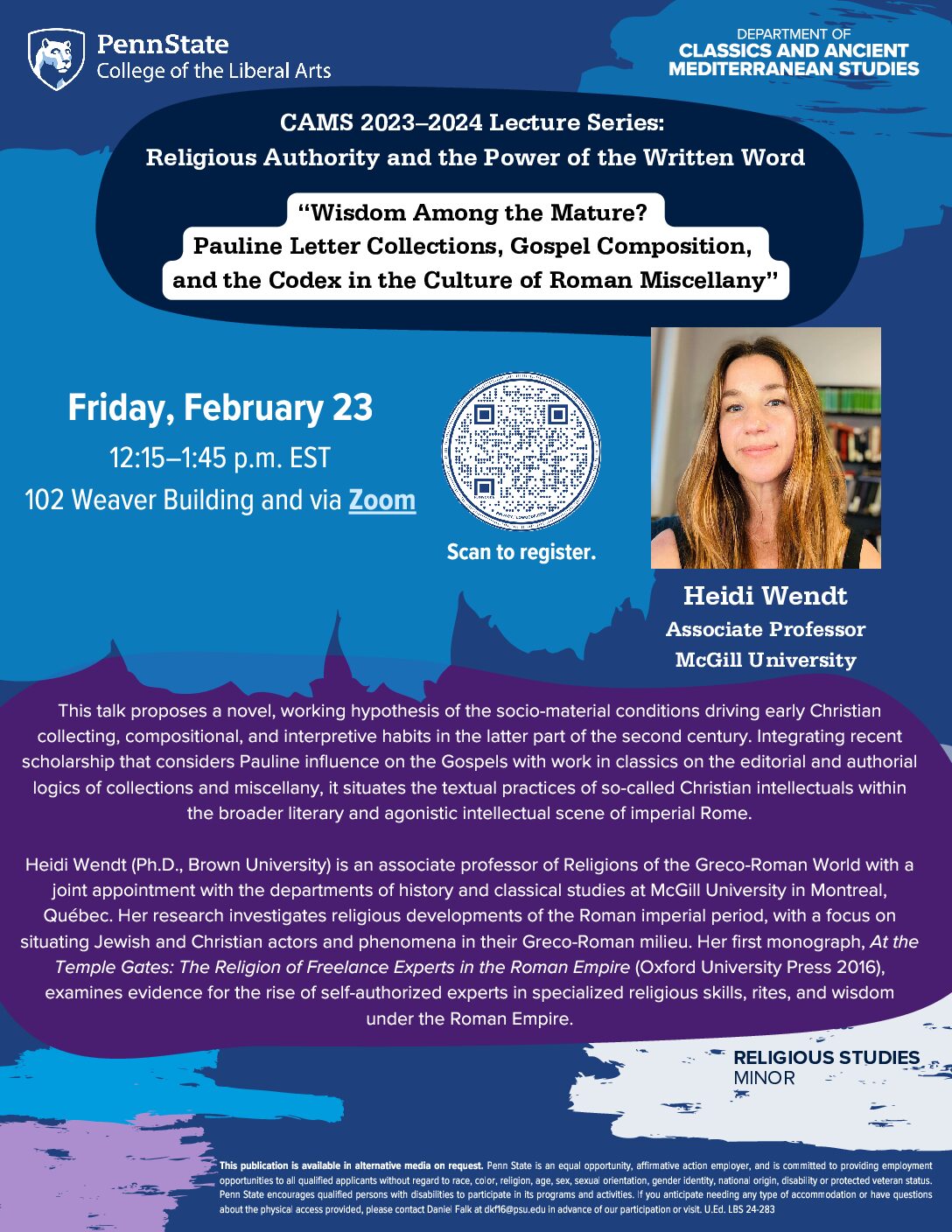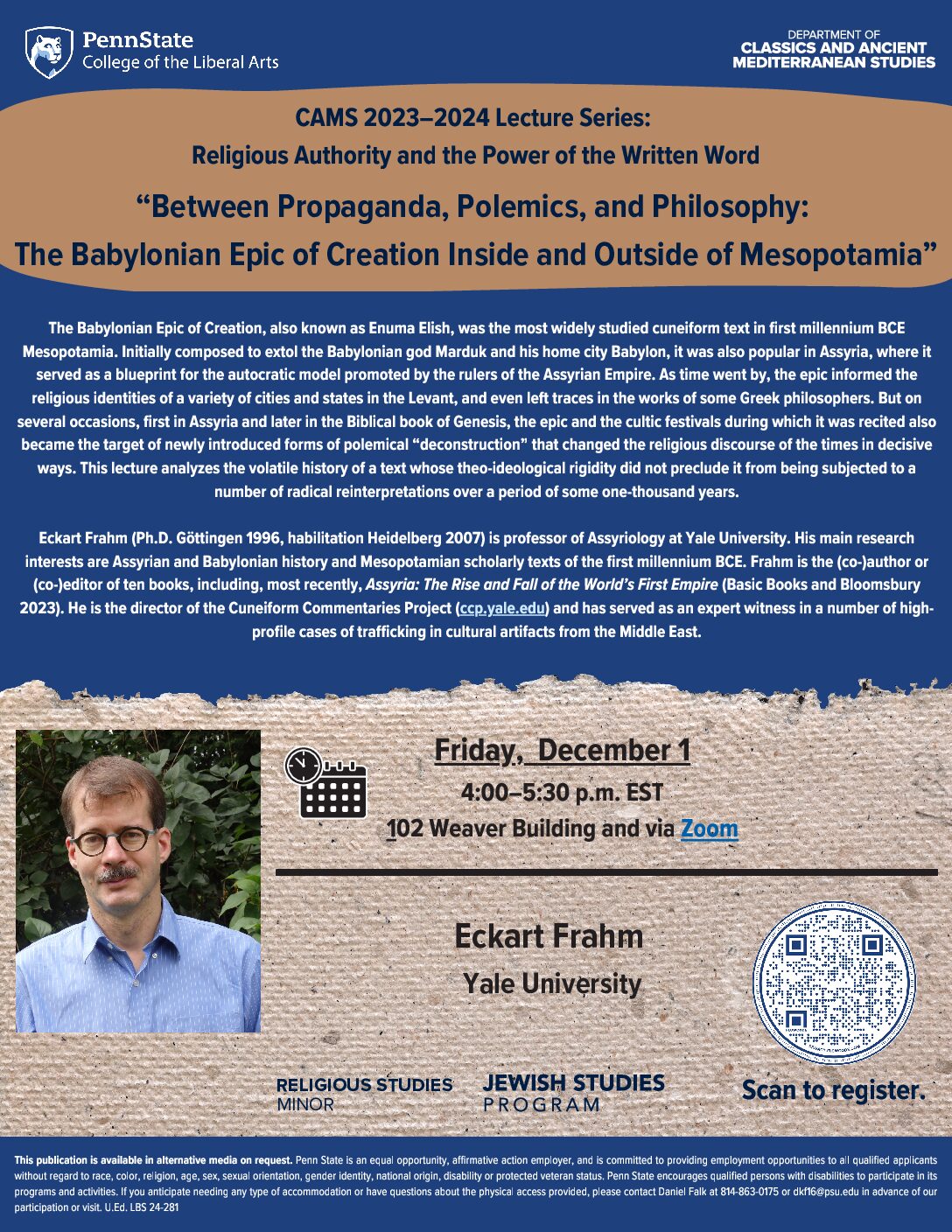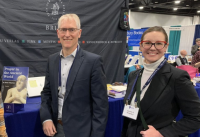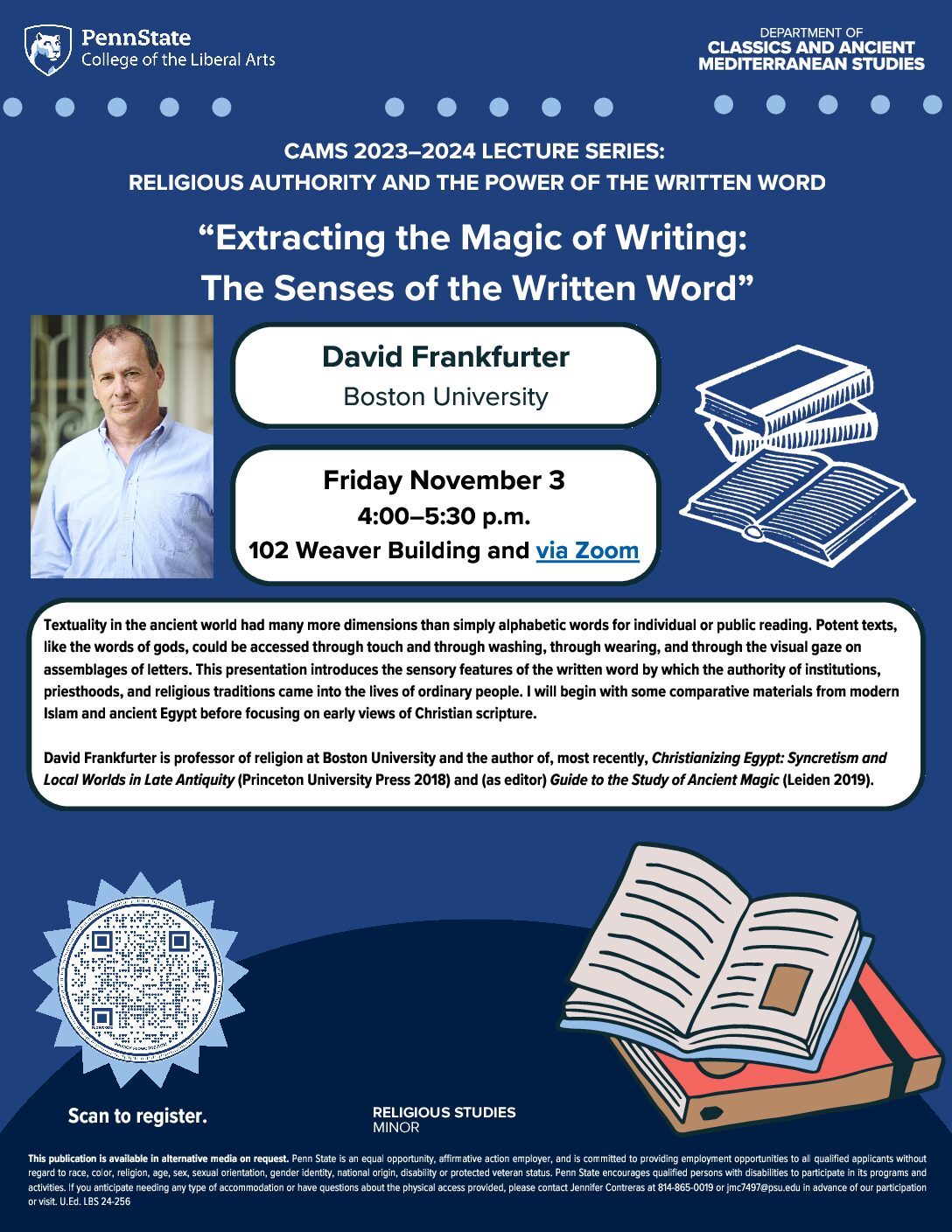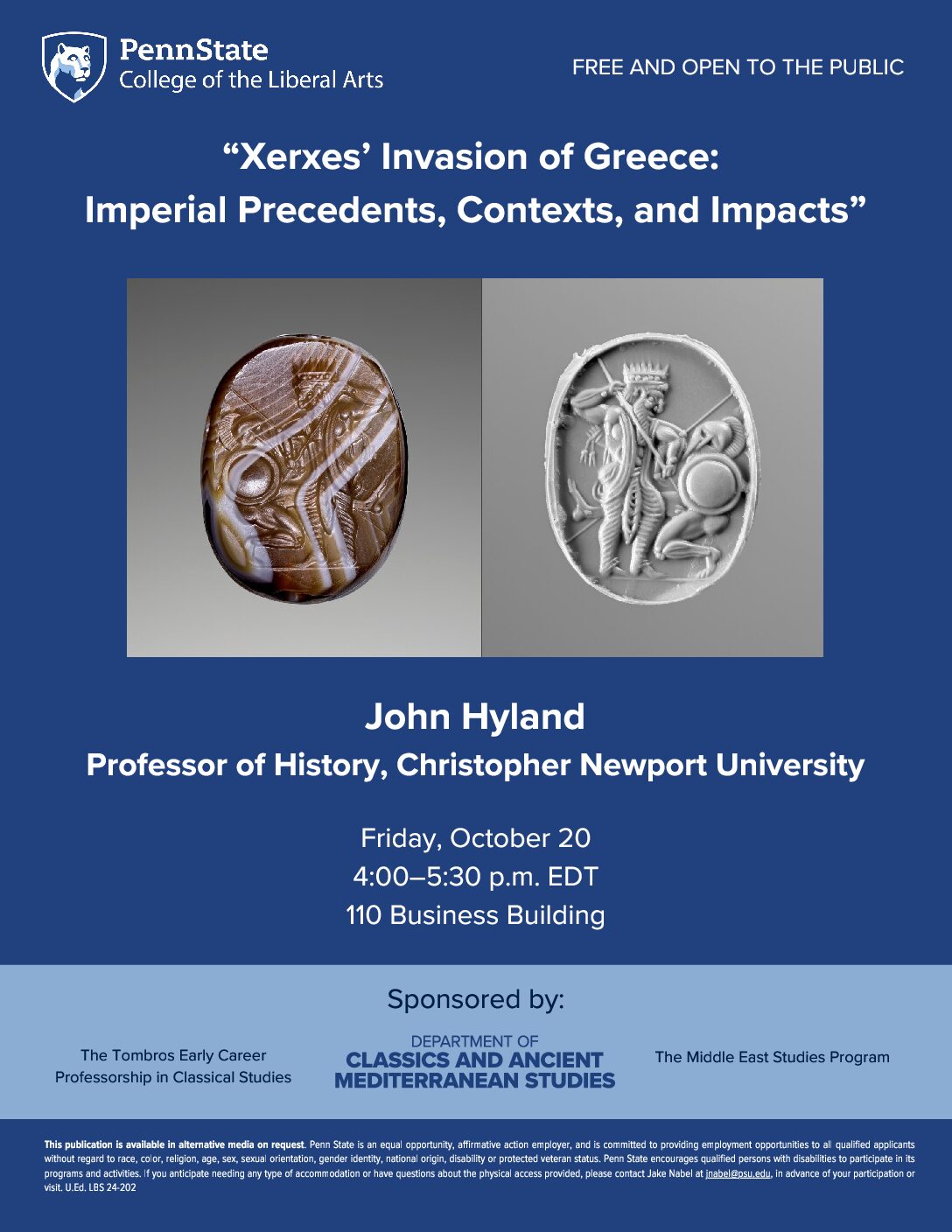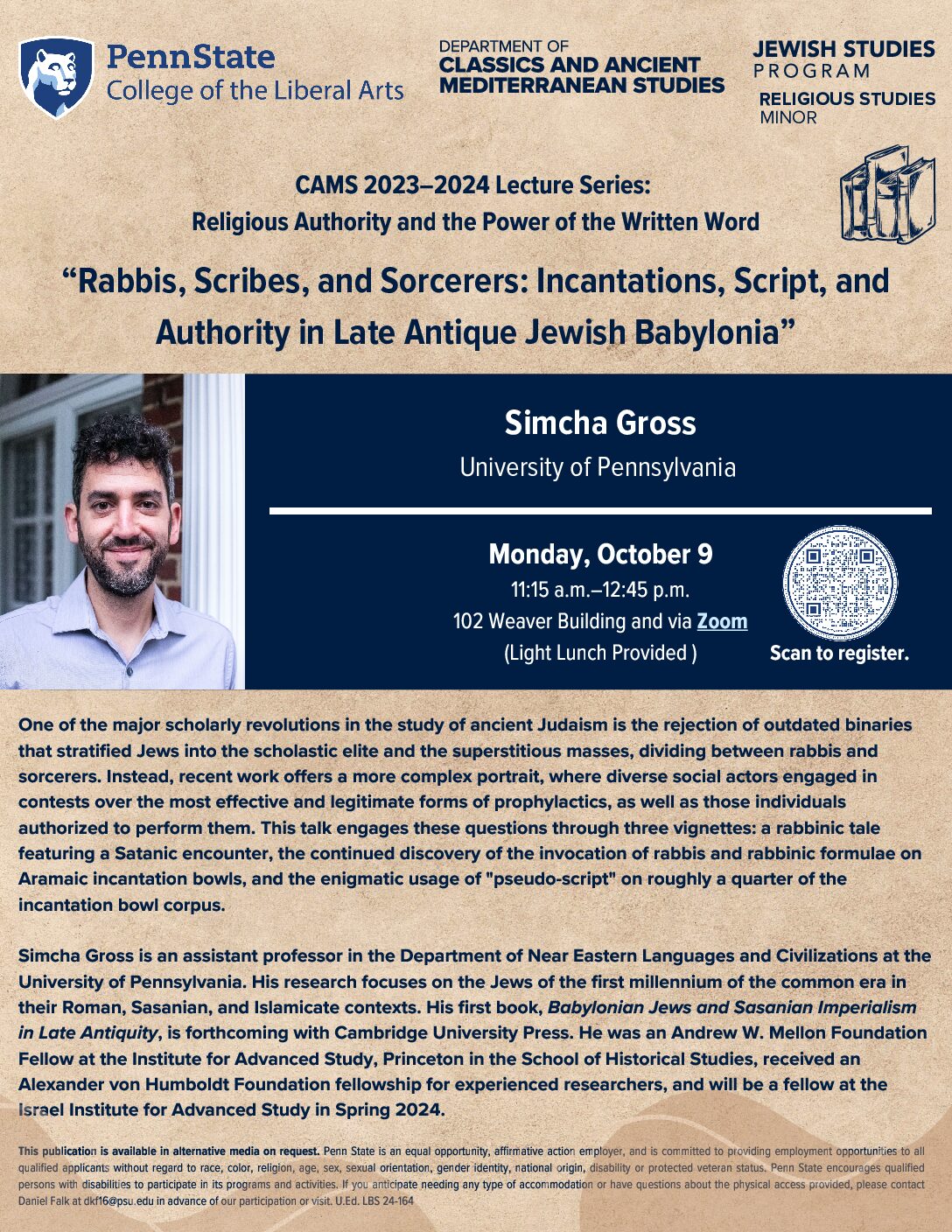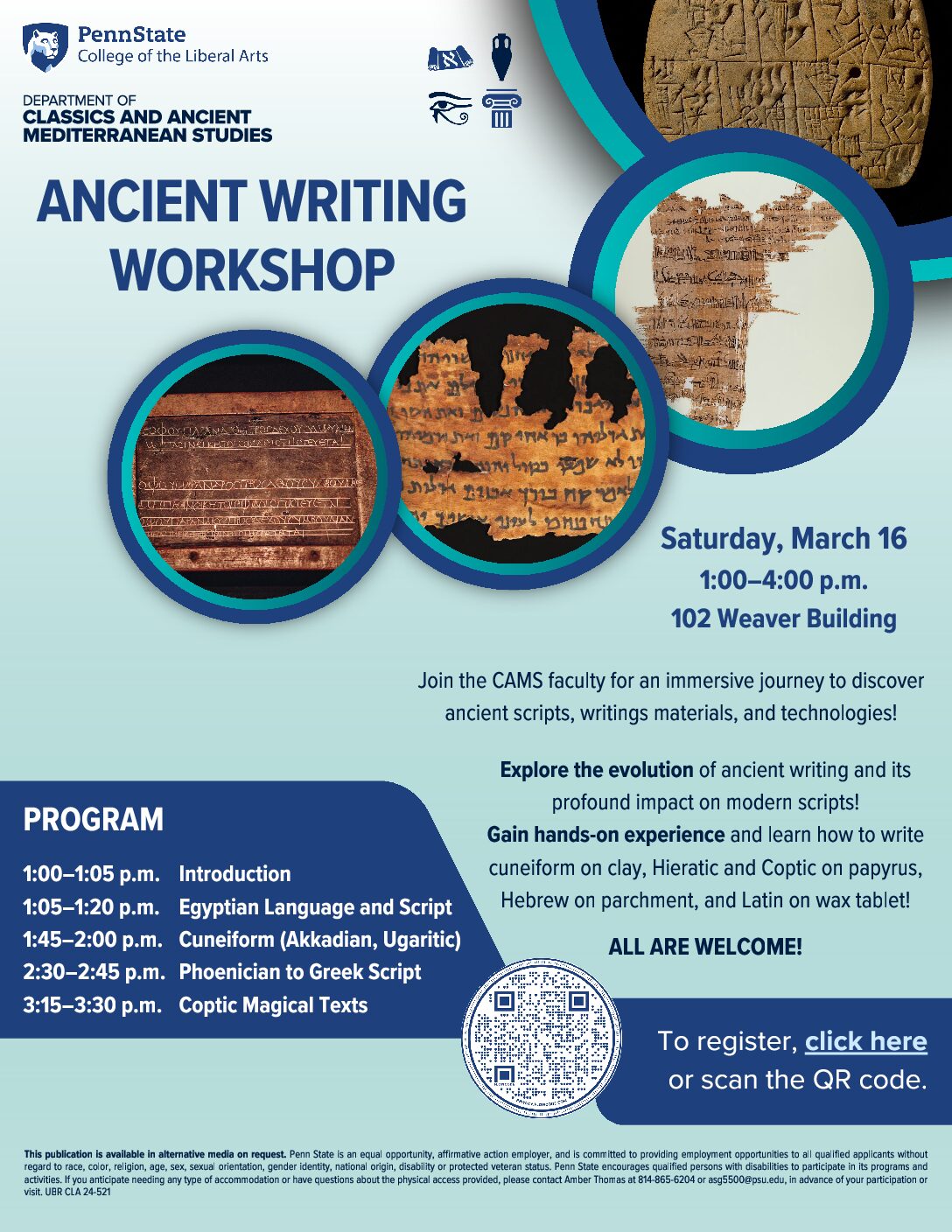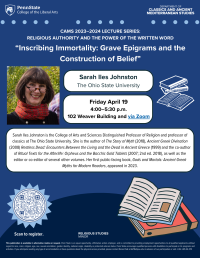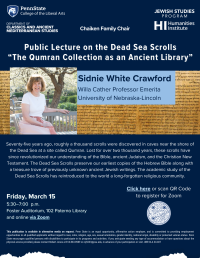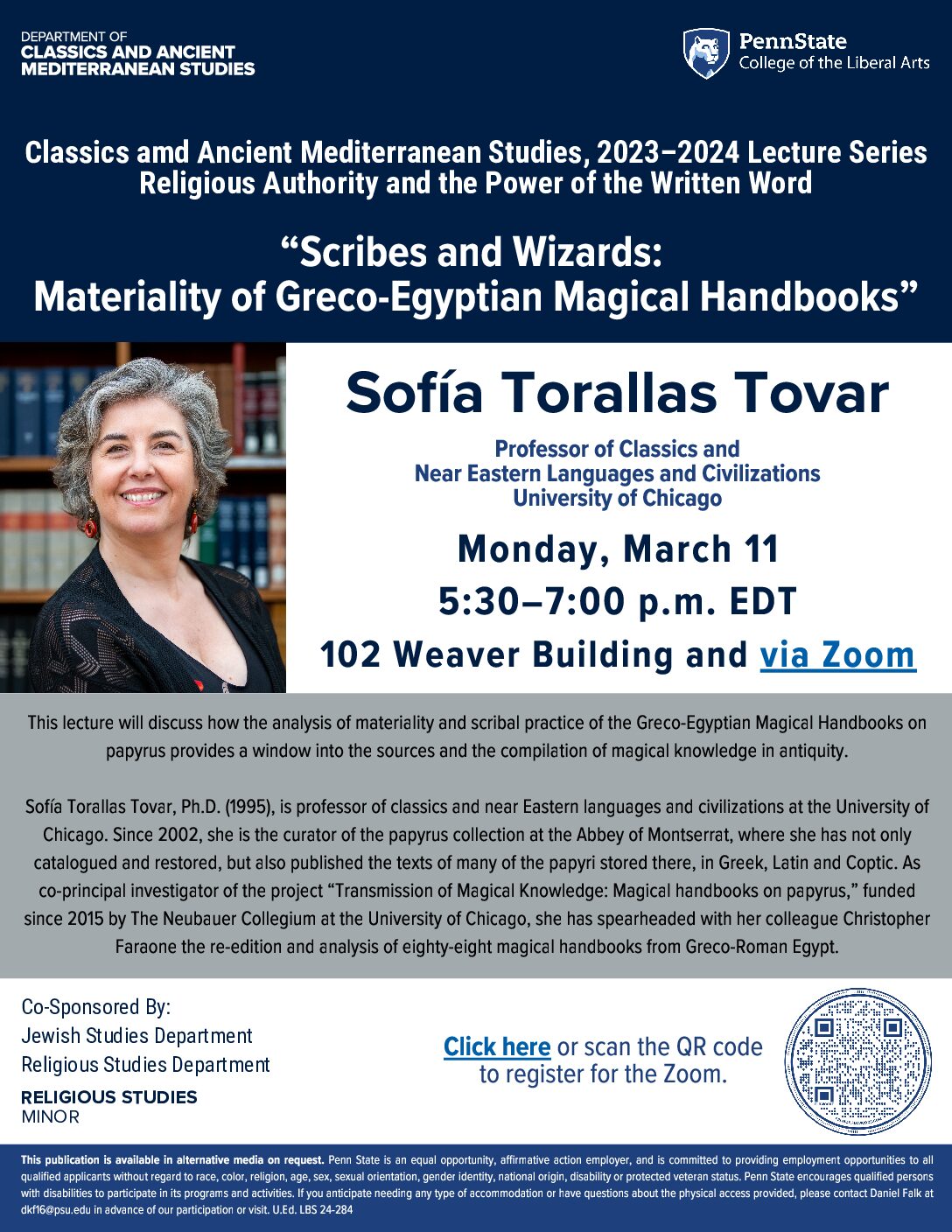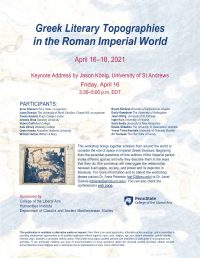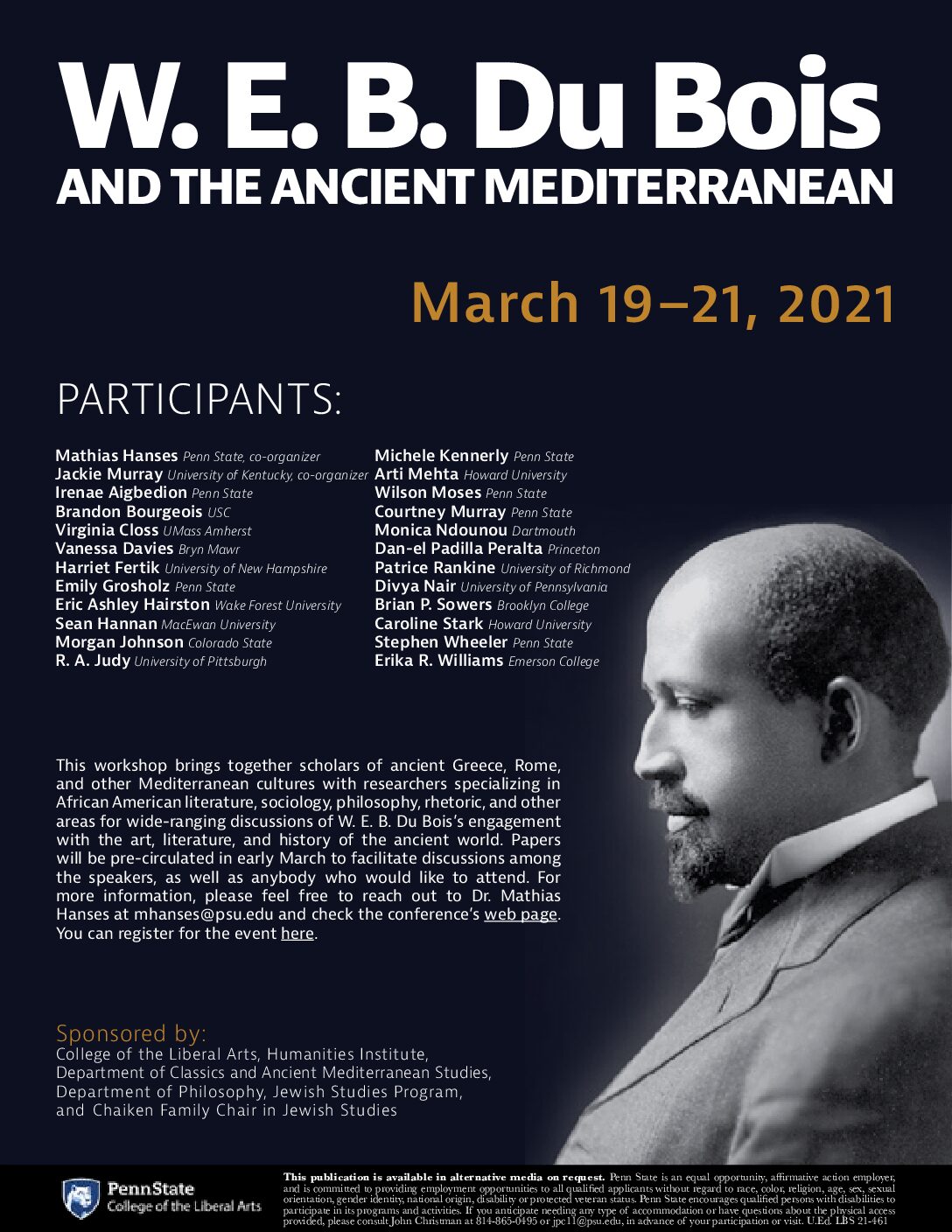News and Events
News
February 23, 2024
12:15 pm
102 Weaver and via Zoom
This talk proposes a novel, working hypothesis of the socio-material conditions driving early Christian collecting, compositional, and interpretive habits in the latter part of the second century. Integrating recent scholarship that considers Pauline influence on the Gospels with work in classics on the editorial and authorial logics of collections and miscellany, it situates the textual practices of so-called Christian intellectuals within the broader literary and agonistic intellectual scene of imperial Rome.
December 1, 2023
4:00 pm
Weaver Building, 102 and Online via Zoom
The Babylonian Epic of Creation, also known as Enuma Elish, was the most widely studied cuneiform text in first millennium BCE Mesopotamia. Initially composed to extol the Babylonian god Marduk and his home city Babylon, it was also popular in Assyria, where it served as a blueprint for the autocratic model promoted by the rulers of the Assyrian Empire. As time went by, the epic informed the religious identities of a variety of cities and states in the Levant, and even left traces in the works of some Greek philosophers. But on several occasions, first in Assyria and later in the Biblical book of Genesis, the epic and the cultic festivals during which it was recited also became the target of newly introduced forms of polemical “deconstruction” that changed the religious discourse of the times in decisive ways. This lecture analyzes the volatile history of a text whose theo-ideological rigidity did not preclude it from being subjected to a number of radical reinterpretations over a period of some one-thousand years.
Dr. Daniel Falk and Dr. Jennifer Singletary have been awarded a grant from the Database of Religious History (DRH), a largescale quantitative-qualitative database for the cultural evolution of religions, hosted by the University of British Columbia. The award will fund a research project, titled “Prayer as Interaction: A Quantitative Study,” which aims to answer questions about the correlation between various features of prayers and conceptions of superhuman agents.
November 3, 2023
4:00 pm
Weaver Building, 102 and Online via Zoom
Textuality in the ancient world had many more dimensions than simply alphabetic words for individual or public reading. Potent texts, like the words of gods, could be accessed through touch and through washing, through wearing and through the visual gaze on assemblages of letters. This presentation introduces the sensory features of the written word by which the authority of institutions, priesthoods, and religious traditions came into the lives of ordinary people. I will begin with some comparative materials from modern Islam and ancient Egypt before focusing on early views of Christian scripture.
October 20, 2023
4:00 pm
110 Business Building
October 9, 2023
11:15 am
Weaver 102 or on Zoom
One of the major scholarly revolutions in the study of ancient Judaism is the rejection of outdated binaries that stratified Jews into the scholastic elite and the superstitious masses, dividing between rabbis and sorcerers. Instead, recent work offers a more complex portrait, where diverse social actors engaged in contests over the most effective and legitimate forms of prophylactics, as well as those individuals authorized to perform them. This talk engages these questions through three vignettes: a rabbinic tale featuring a Satanic encounter, the continued discovery of the invocation of rabbis and rabbinic formulae on Aramaic incantation bowls, and the enigmatic usage of “pseudo-script” on roughly a quarter of the incantation bowl corpus.
Events
March 16, 2024
1:00 pm
Sparks 121 and the Sparks foyer (NEW LOCATION)
Join the CAMS faculty on March 16 for an immersive journey to discover the ancient scripts, writing materials, and technologies!
Click on the post for more info and registration.
April 19, 2024
4:00 pm
102 Weaver and via Zoom
Sarah Iles Johnston is the College of Arts and Sciences Distinguished Professor of Religion and Professor of Classics at The Ohio State University. She is the author of The Story of Myth (2018), Ancient Greek Divination (2008) Restless Dead: Encounters Between the Living and the Dead in Ancient Greece (1999) and the co-author of Ritual Texts for the Afterlife: Orpheus and the Bacchic Gold Tablets (2007; 2nd ed. 2018), as well as the editor or co-editor of several other volumes. Her first public-facing book, Gods and Mortals: Ancient Greek Myths for Modern Readers, appeared in 2023.
March 15, 2024
5:30 pm
Foster Auditorium, 102 Paterno Library and online via Zoom
Seventy-five years ago, roughly a thousand scrolls were discovered in caves near the shore of the Dead Sea at a site called Qumran. Lost for over two thousand years, these scrolls have since revolutionized our understanding of the Bible, ancient Judaism, and the Christian New Testament. The Dead Sea Scrolls preserve our earliest copies of the Hebrew Bible along with a treasure trove of previously unknown ancient Jewish writings. The academic study of the Dead Sea Scrolls has reintroduced to the world a long-forgotten religious community.
March 11, 2024
5:30 pm
102 Weaver and via Zoom
This lecture will discuss how the analysis of materiality and scribal practice of the Greco-Egyptian Magical Handbooks on Papyrus provides a window into the sources and the compilation of magical knowledge in Antiquity.
April 16, 2021
– April 18, 2021
Zoom
This workshop, jointly organized by Anna Peterson (Penn State) and Janet Downie (UNC), will explore the relationship between lived space, society, and power and its depiction in Greek literature of the first three centuries C.E.
March 19, 2021
– March 21, 2021
Zoom
This workshop reflects an on-going shift in the discipline of Classics, which has been focusing increasingly on the reception of ancient materials among Black, Indigenous, or Other People of Color.
